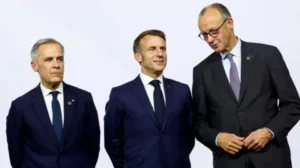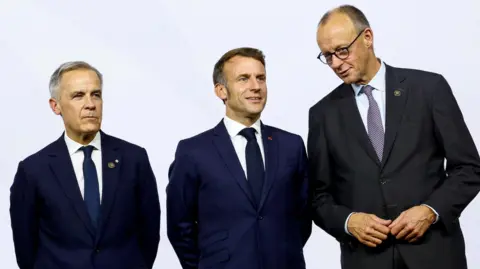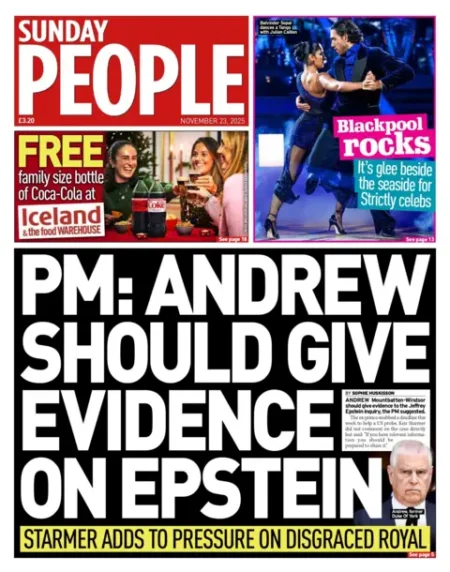In a significant development regarding the ongoing Ukraine conflict, U.S. Secretary of State Marco Rubio has publicly asserted that he authored a 28-point plan aimed at facilitating peace in Ukraine. This statement comes in light of recent debates that labeled the proposal as nothing more than a “wish list” from Russia. Rubio’s assurances indicate that the plan, while drawing on insights from both Ukraine and Russia, is fundamentally a product of U.S. diplomatic efforts. The intricacies and implications of the plan are being scrutinized, particularly against the backdrop of opposition from European allies.
Rubio’s declaration arrived after a group of senators revealed he characterized the proposed draft as a document that did not reflect the U.S. government’s stance. As he distanced himself from criticisms surrounding the draft, he stated that it was indeed “authored by the US” and constructed from dialogues with both parties. This intermediary position was emphasized as he headed to Geneva for discussions focused on the proposal with Ukrainian and European security officials. U.S. President Donald Trump has previously urged Ukraine to promptly agree to this initiative, amplifying its urgency in the international arena.
The response from Ukraine’s allies, particularly in Europe, has been notable, pushing back against several contentious elements within the draft that have not yet been officially disclosed but have been partially leaked to the media. Reports indicate that a significant feature of the plan includes a demand for Ukraine to withdraw its forces from eastern territories that remain beyond Russia’s military control, alongside imposing limitations on the size and capabilities of the Ukrainian armed forces.
During the Halifax Security Forum, prominent Republican Senator Mike Rounds remarked that Rubio conveyed to lawmakers that the draft plan does not embody official U.S. policy. Rounds recounted being informed that it was presented to Trump’s diplomatic envoy Steve Witkoff by representatives with links to Russia, and underscored that it does not constitute a U.S. recommendation, describing it as falling short of a legitimate peace plan.
Following this contention, Tommy Pigott, a spokesperson for the U.S. State Department, contested Rounds’ assertions, labeling them as “blatantly false.” Pigott reiterated that the overarching plan was indeed a U.S. initiative, incorporating feedback from both Russia and Ukraine. To affirm this, Rubio released a statement on social media regarding the dual influences shaping the proposal, reaffirming the U.S.’s decisive role in its formulation.
Significantly, Trump remarked that the proposal should not be interpreted as a “final offer” for Ukraine, indicating that President Volodymyr Zelensky would have the ultimate say on its acceptance. The urgency surrounding the plan was palpable when Zelensky conveyed that Ukraine stands at one of the “most difficult moments in our history” due to the pressure exerted by the U.S. Moreover, Russian President Vladimir Putin acknowledged the proposal could form a starting point for a potential agreement, further complicating matters.
The discussions around the proposal, including a possible deadline for approval suggested by Trump, have drawn reactions from key European leaders. At the recent G20 summit in South Africa, allies prominently expressed concerns that parts of the plan could leave Ukraine “vulnerable to attack.” A joint statement from several leaders emphasized that, while some elements of the draft might pave the way for a fair agreement, comprehensive revisions are necessary to adequately secure Ukraine’s interests.
Prominent figures such as French President Emmanuel Macron and German Chancellor Friedrich Merz echoed these sentiments. Macron insisted that any agreement must secure stability for all Europeans, reflecting a broader unease regarding the current format of the proposal. Newly appointed UK Prime Minister Sir Keir Starmer also engaged with both Zelensky and Trump, sharing insights regarding ongoing discussions among European leaders about the plan.
The ongoing conflict, ignited by Russia’s invasion of Ukraine in February 2022, has naturally increased Kyiv’s dependency on American military support. In its unrefined structure, the plan includes provisions for Ukrainian withdrawals from certain Eastern regions and effectively recognizes Russian control in these contested areas. The disposition of Ukraine’s borders, especially in the southern Kherson and Zaporizhzhia regions, remains a contentious topic as discussions unfold.
Overall, the backdrop of international diplomacy in this context illustrates the complexities surrounding peacemaking efforts, the importance of unified allies, and the strategic interests that shape the proposals that seek to bring an end to the ongoing violence in Ukraine.











